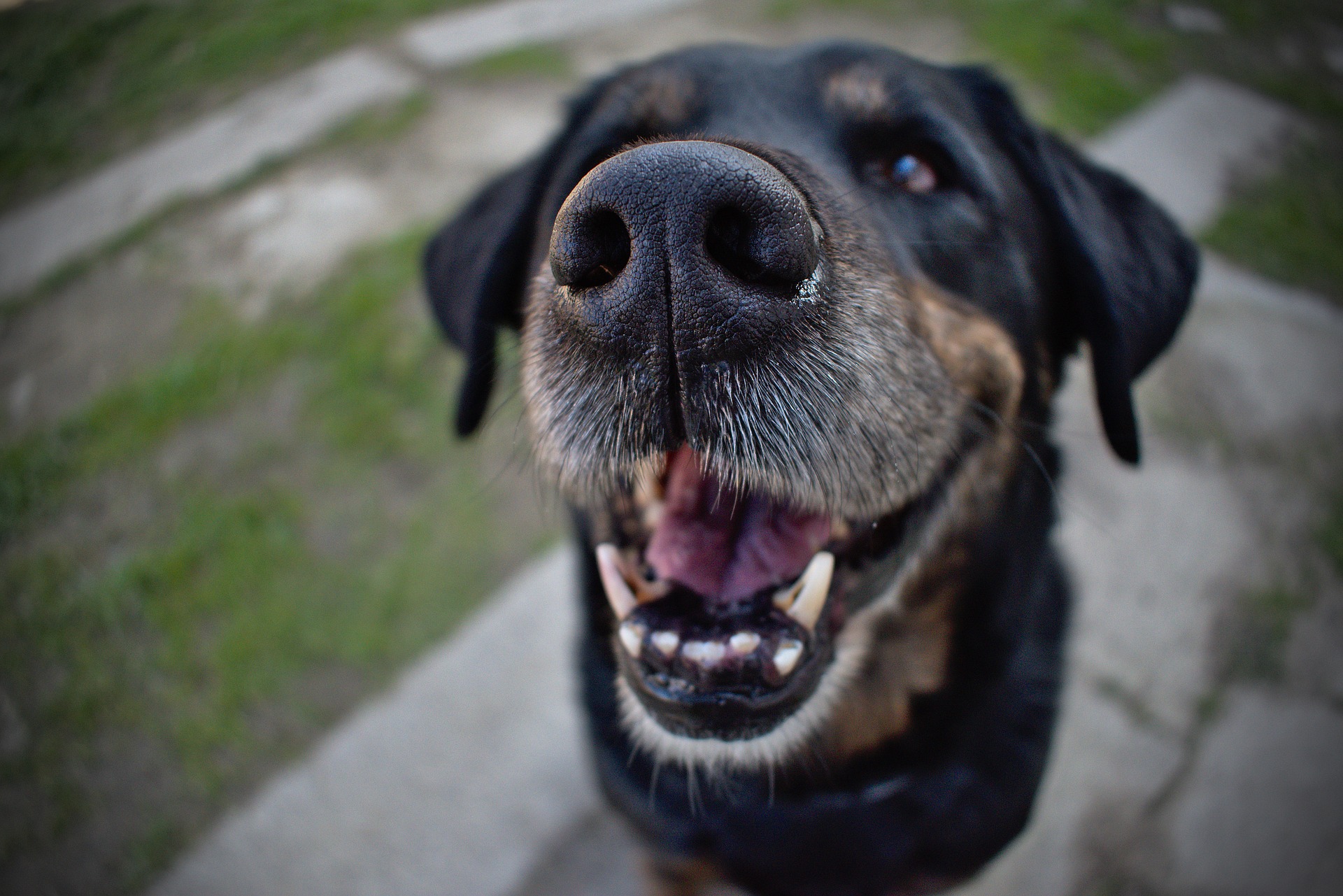Oral hygiene is often overlooked by owners when considering what kind of veterinary care their dog needs. Did you know that most dogs will develop periodontal disease by the time they are three years old? Just like humans, dogs can develop gingivitis, tartar, tooth decay, abscesses and worse due to the buildup of bacteria in the mouth. Since dogs cannot brush their teeth on their own or tell us when they have a toothache, it is up to pet owners to take proactive measures to ensure proper dental health in our furry companions. Teeth cleaning is a great place to start.
The gold standard in at-home dental care is brushing your dog’s teeth. Imagine if you went a few days without brushing your teeth. Now imagine what it is like to have never brushed your teeth…ever. And we wonder why dog breath smells so bad!
Brushing their teeth just once a day for at least thirty seconds can drastically increase the amount of time they can go between professional dental cleanings. Canine toothbrushes or toothbrush caps that fit over your finger are the best tools to use for brushing. Never give a dog human toothpaste. Many ingredients in our toothpaste are toxic to our furry friends.
The good news is that if your dog’s teeth are relatively tartar-free, there are steps you can take at home to prevent periodontal disease from advancing. The easiest, and the one almost guaranteed to make your dog wag her tail, is by using dental treats. There are countless brands of dental treats to choose from. Some are made to take a long time to chew, thereby scraping plaque off of your dog’s teeth before it can harden into tartar. Some have enzymes that are made to reduce the amount of harmful, disease-causing bacteria in the mouth. Either option will help provided they are given to your pooch with regularity.
Expert Tip: Water additives can also be used to prevent plaque from sticking to your dog’s teeth, but they are virtually useless against advanced periodontal disease.
The most effective, albeit most expensive, way to stay ahead of your dog’s oral hygiene is by scheduling routine veterinary visits. During a regular check up, veterinarians will assess their patients mouth for signs of periodontal disease. Most veterinary clinics will offer teeth cleaning, much like what humans have done at annual trips to the dentist. During a dental cleaning, your vet can scale and polish your dog’s teeth, and make sure any diseased teeth are removed before they can cause further harm. Unfortunately, if your dog is affected by severe enough periodontal disease that they require a dental cleaning, the options mentioned above are unlikely to help and you should seek advice from your veterinarian.
The most important step you can take towards keeping your dog’s teeth clean is to be an active participant in your puppy’s health. Talk with your veterinarian to come up with a personalized plan on how you can make sure Fido’s pearly-whites stay that way.
Looking for another way to make your dog smile? Gulf Coast K9 Dog Training has been training Sarasota and Bradenton area dogs from their first days home into adulthood. We offer playcare, obedience training and boarding to help your dog have the best possible experience. Call today to learn more.





